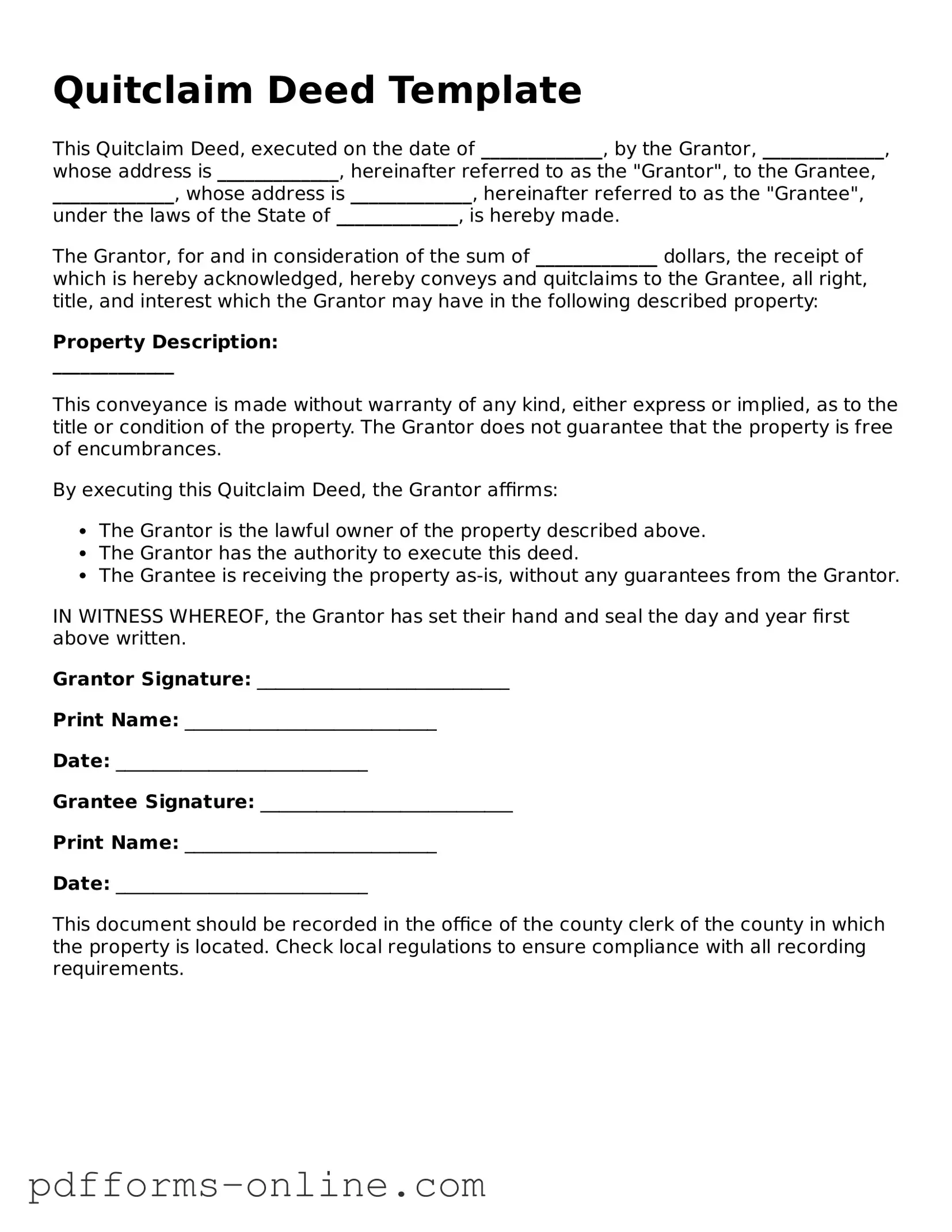Quitclaim Deed Template
This Quitclaim Deed, executed on the date of _____________, by the Grantor, _____________, whose address is _____________, hereinafter referred to as the "Grantor", to the Grantee, _____________, whose address is _____________, hereinafter referred to as the "Grantee", under the laws of the State of _____________, is hereby made.
The Grantor, for and in consideration of the sum of _____________ dollars, the receipt of which is hereby acknowledged, hereby conveys and quitclaims to the Grantee, all right, title, and interest which the Grantor may have in the following described property:
Property Description:
_____________
This conveyance is made without warranty of any kind, either express or implied, as to the title or condition of the property. The Grantor does not guarantee that the property is free of encumbrances.
By executing this Quitclaim Deed, the Grantor affirms:
- The Grantor is the lawful owner of the property described above.
- The Grantor has the authority to execute this deed.
- The Grantee is receiving the property as-is, without any guarantees from the Grantor.
IN WITNESS WHEREOF, the Grantor has set their hand and seal the day and year first above written.
Grantor Signature: ___________________________
Print Name: ___________________________
Date: ___________________________
Grantee Signature: ___________________________
Print Name: ___________________________
Date: ___________________________
This document should be recorded in the office of the county clerk of the county in which the property is located. Check local regulations to ensure compliance with all recording requirements.
